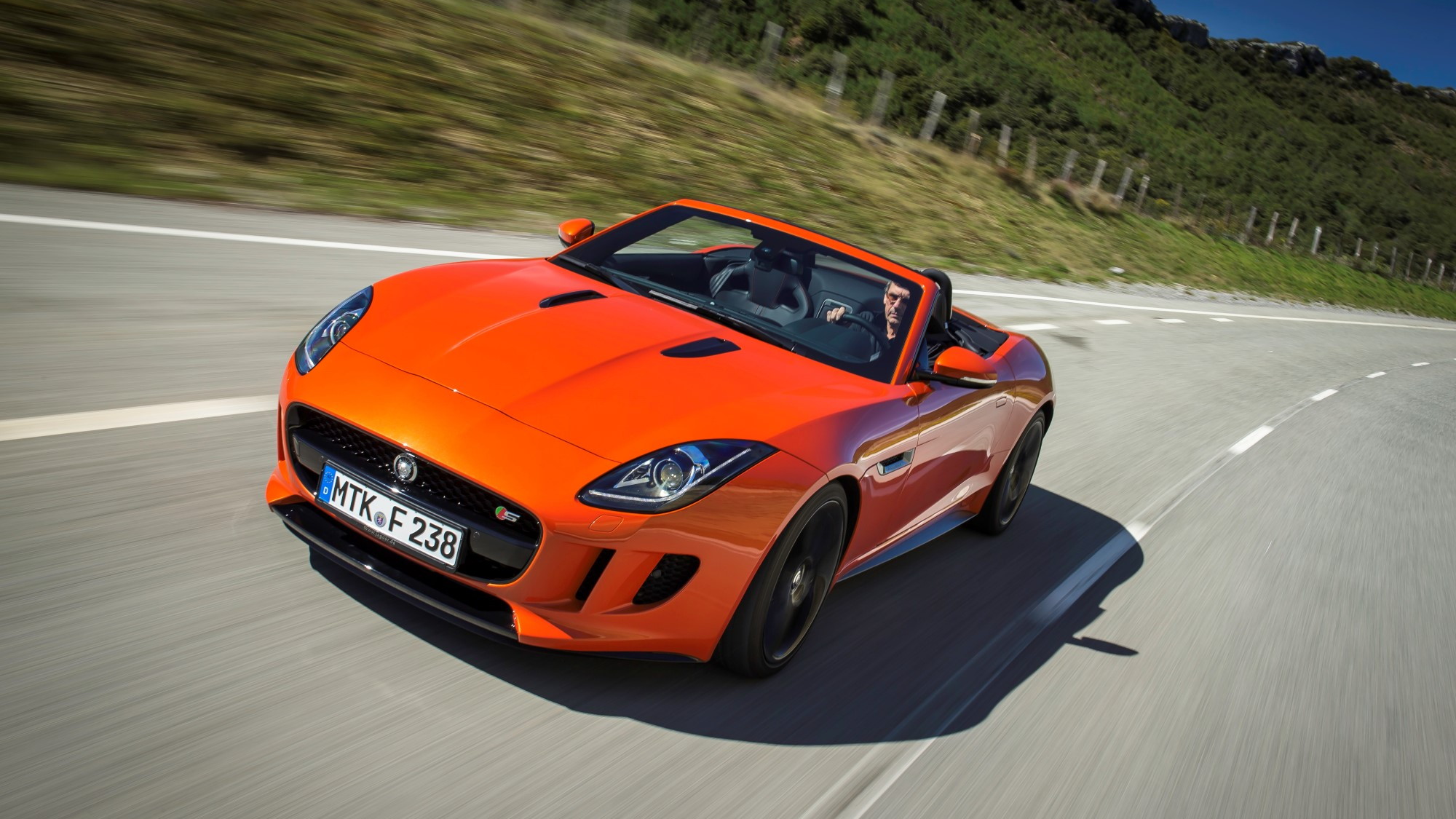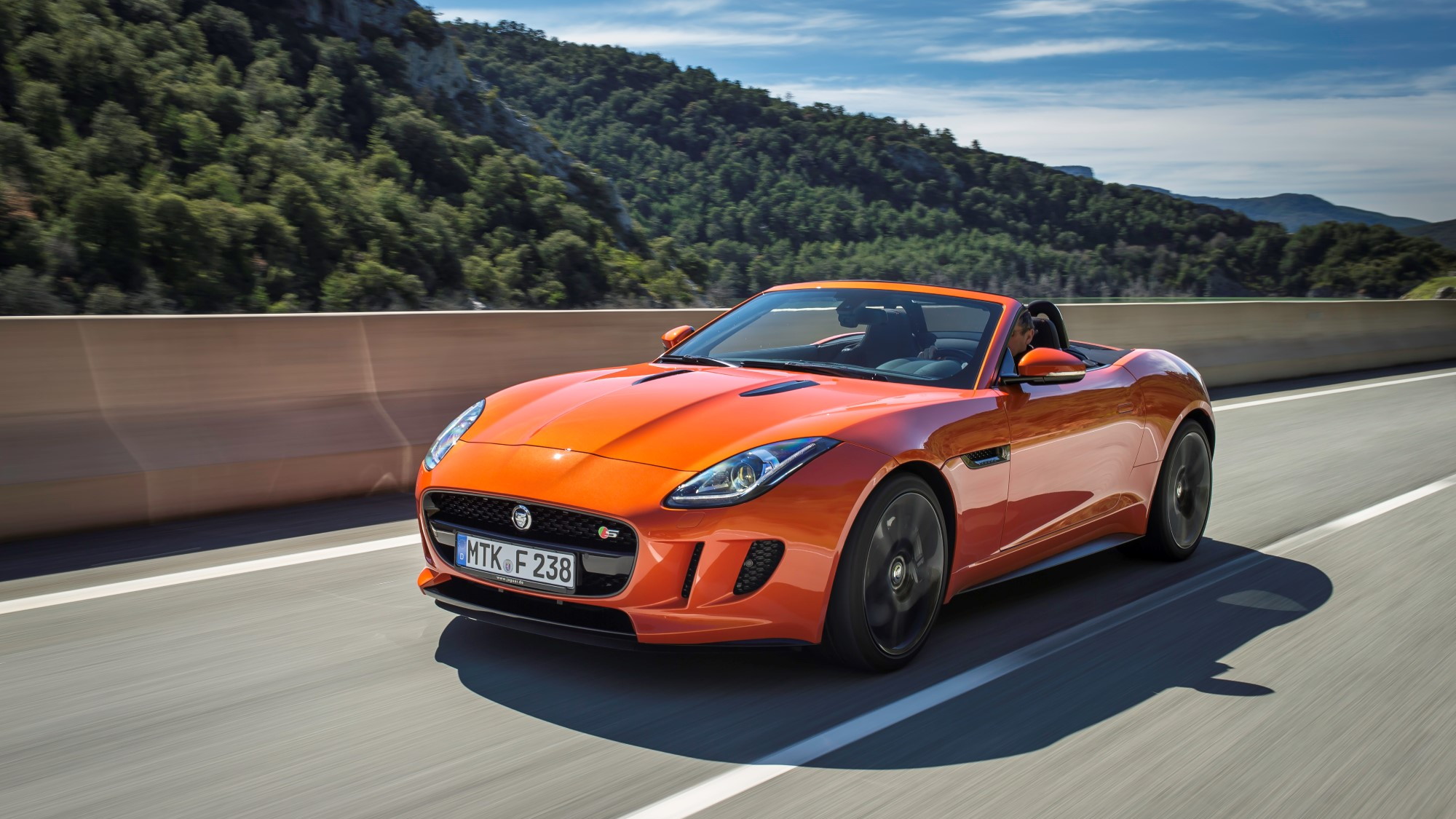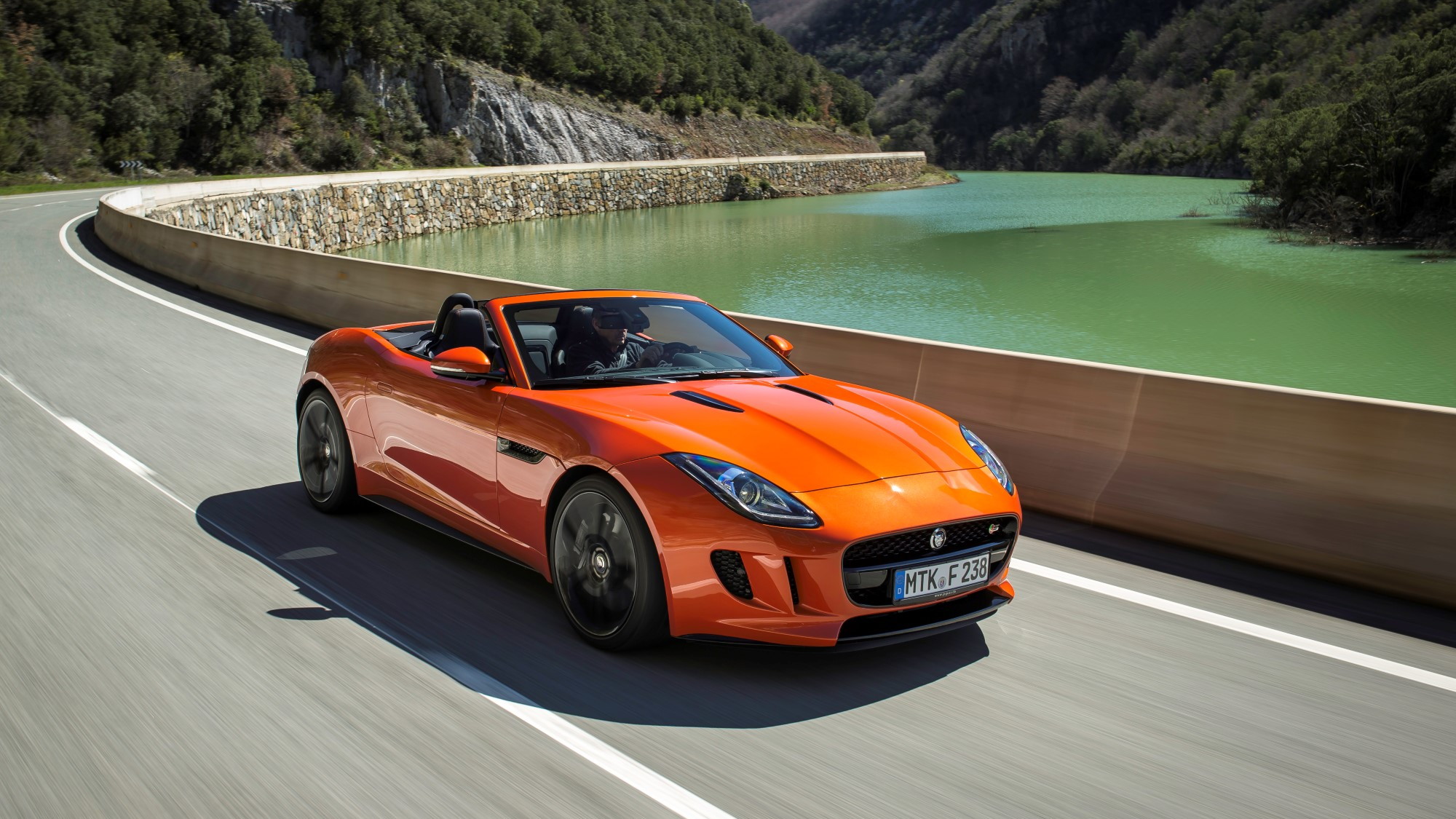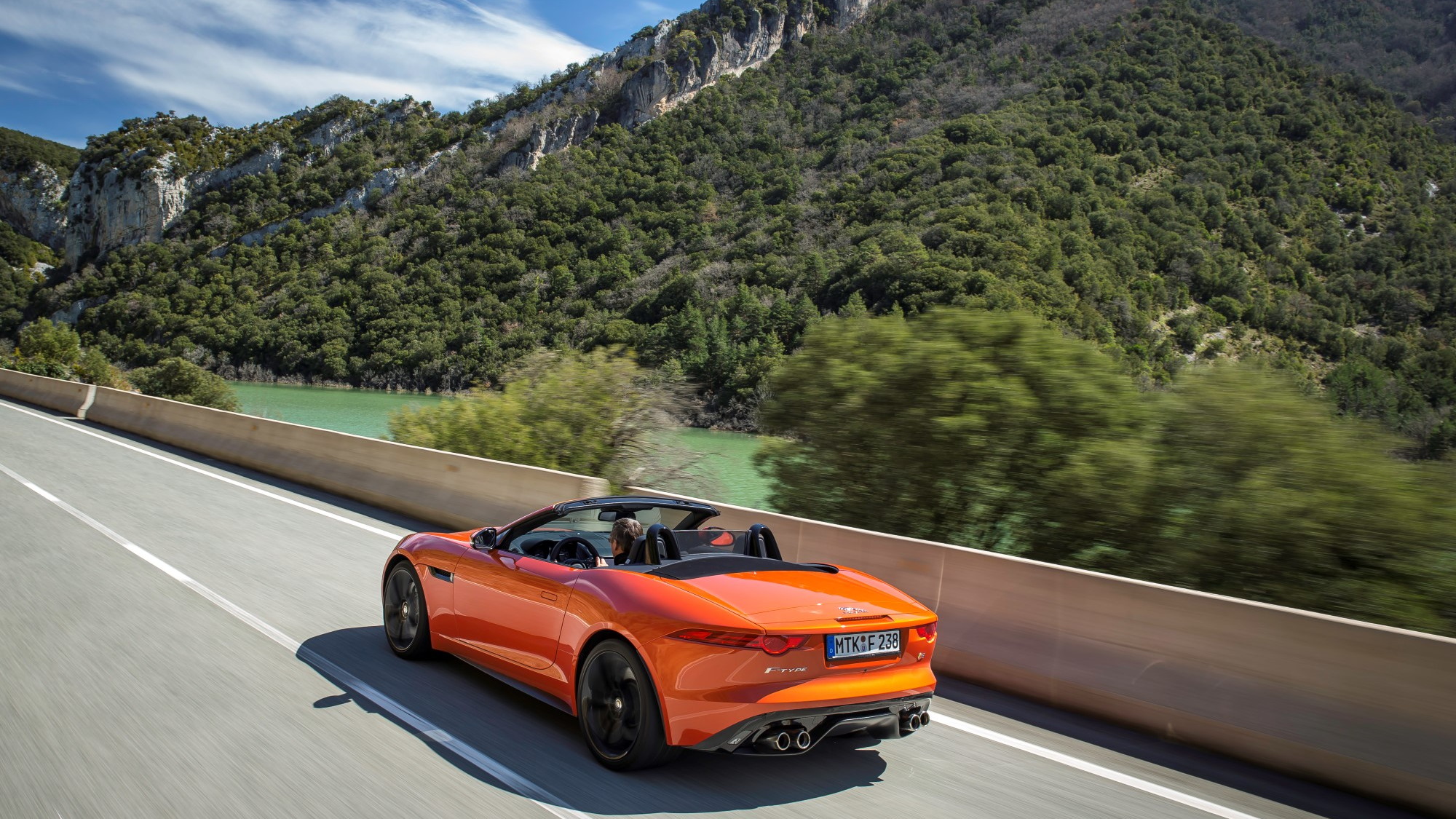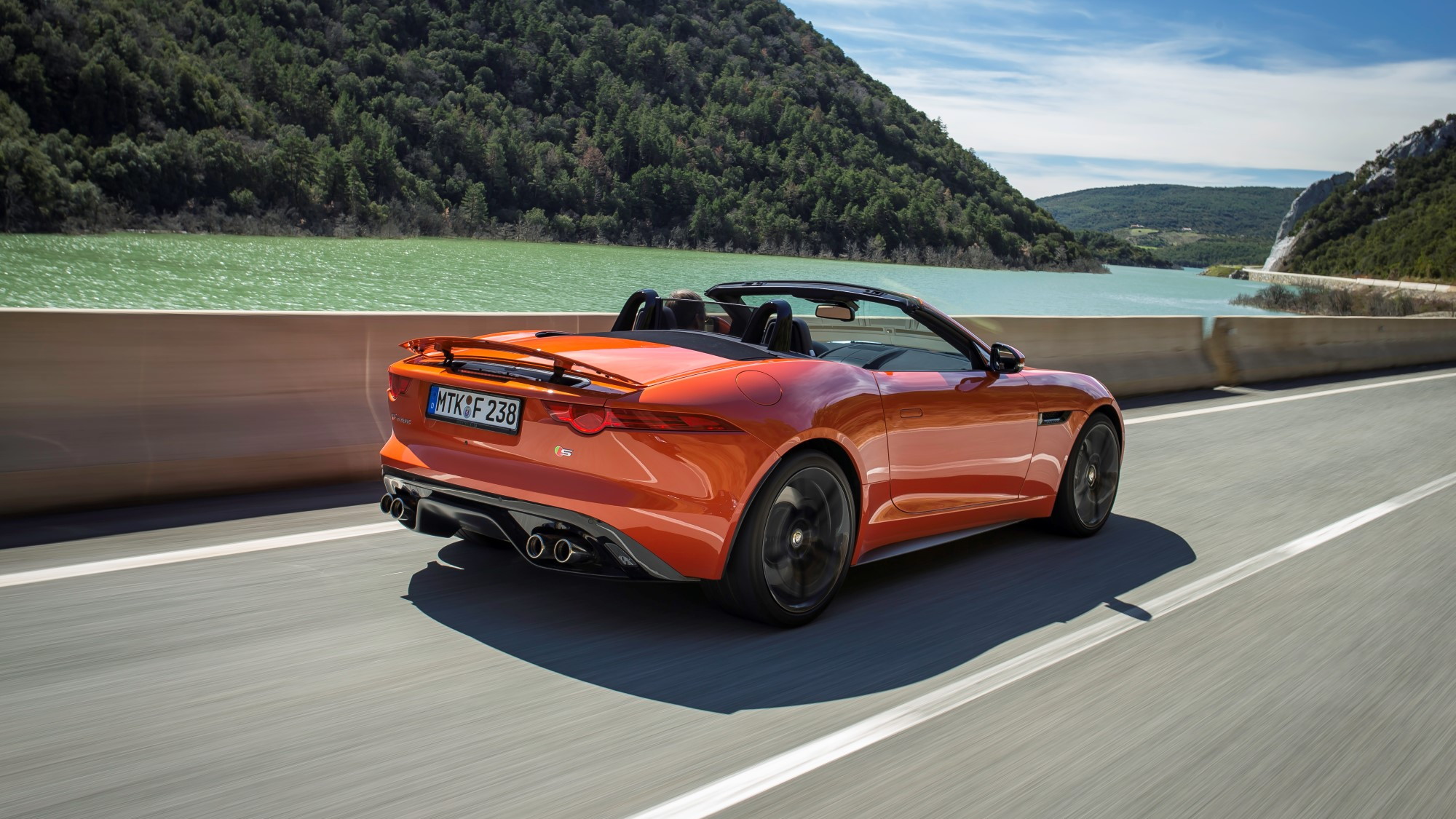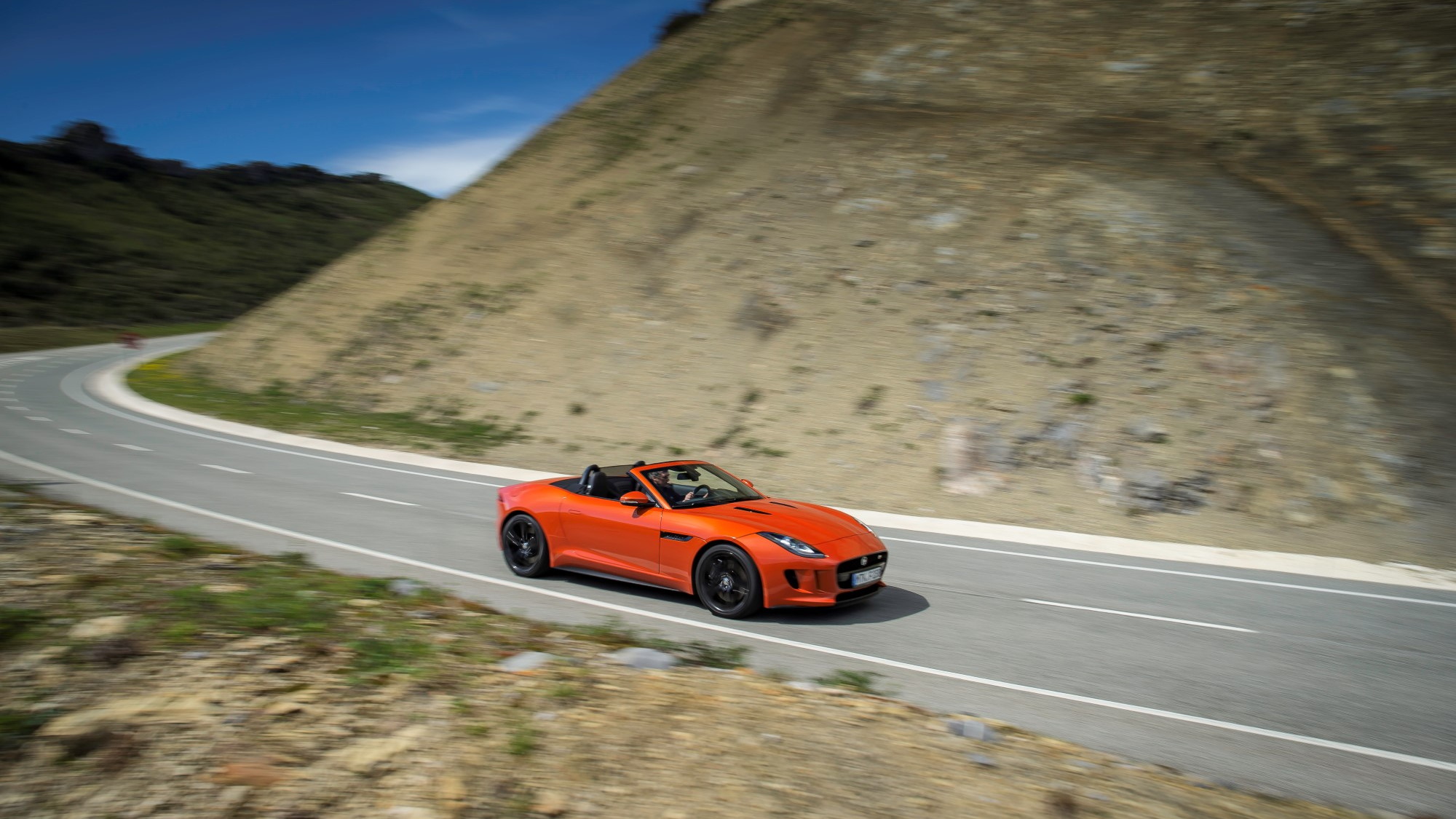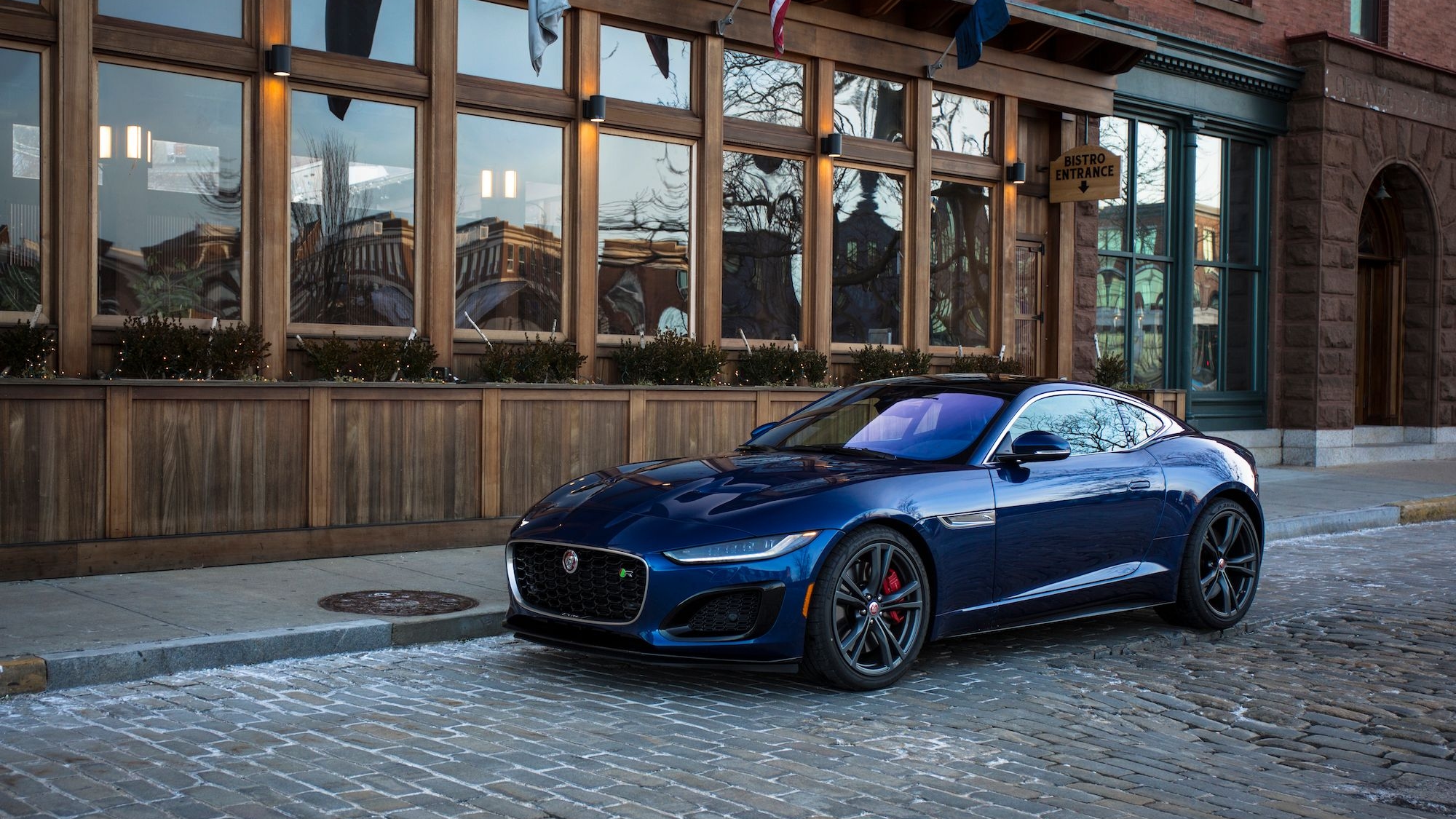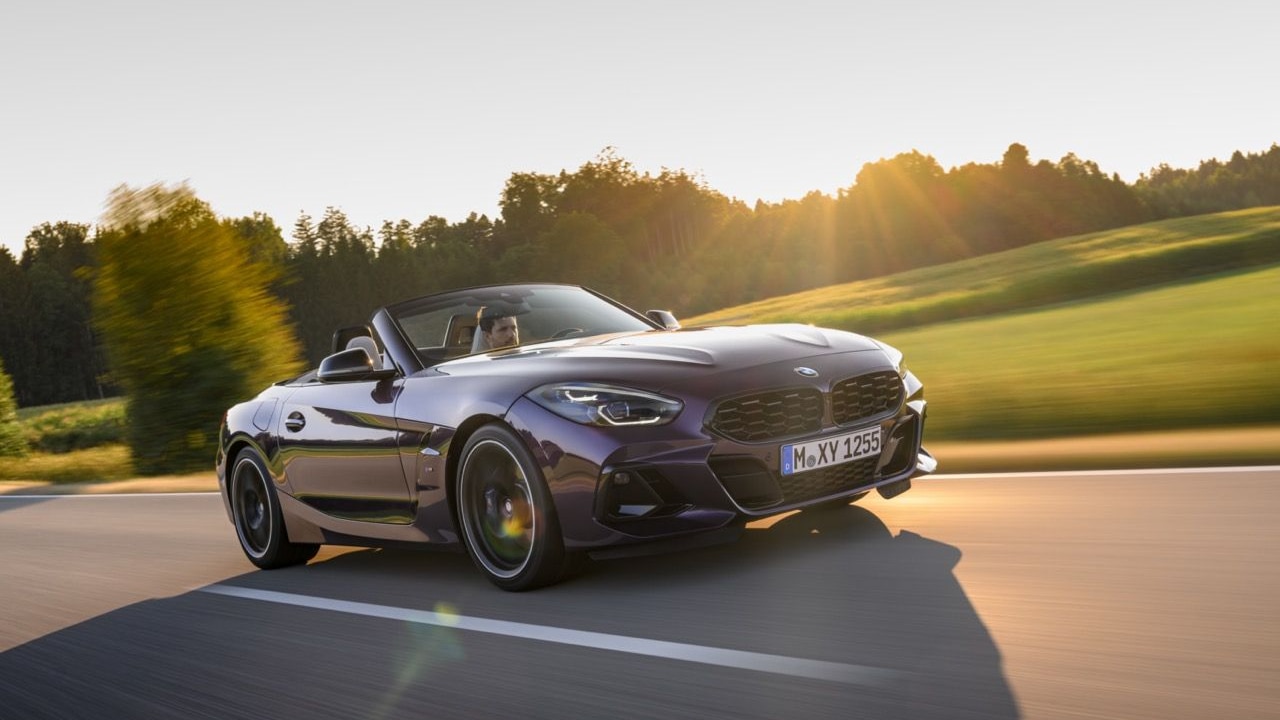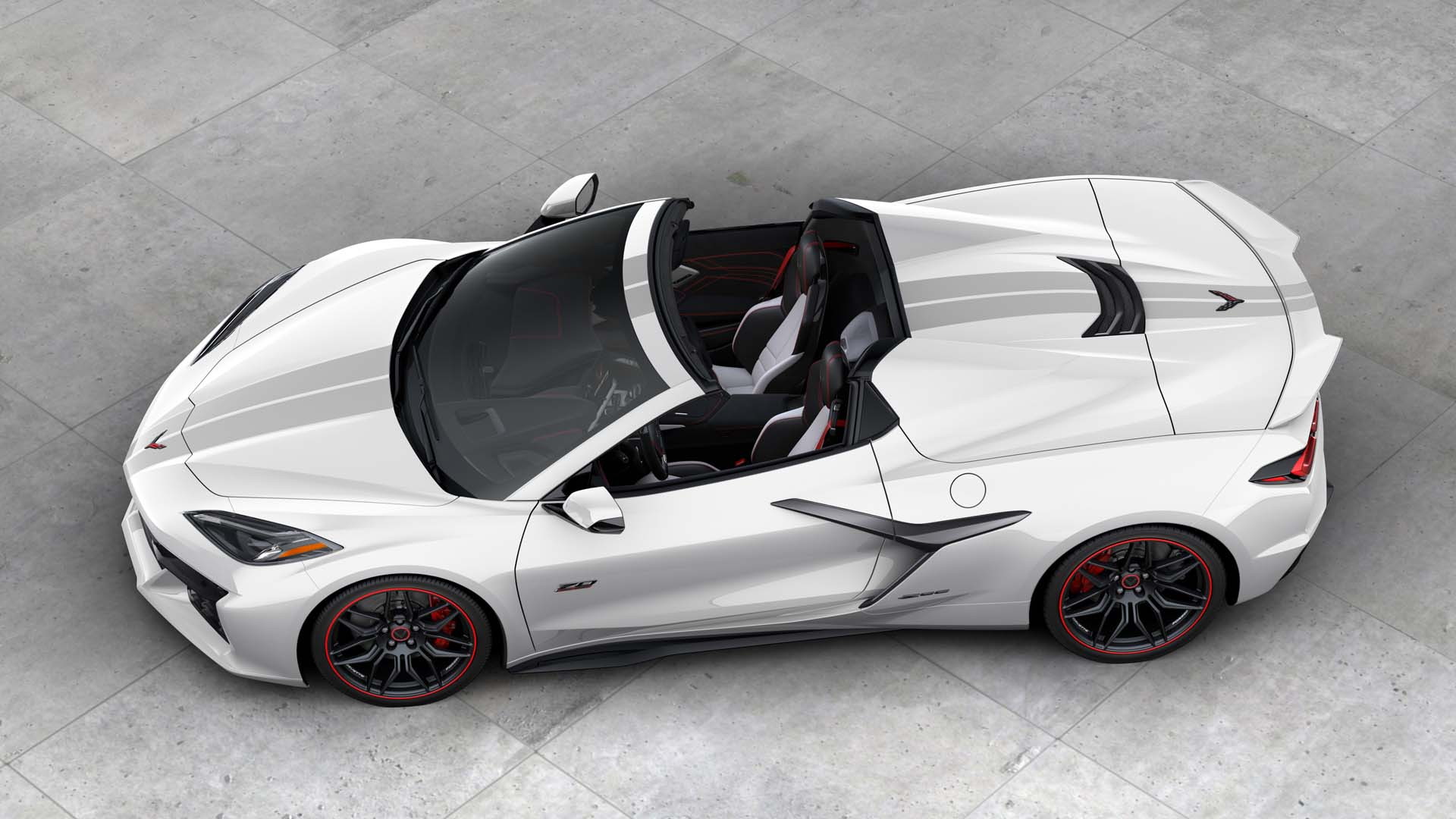Fear not, we have you covered.
Fresh from our drive of the 2014 Jaguar F-Type in Spain, we have the info you need to choose between the XK and its newer, smaller, sportier alternative.
First, we'll look at the key stats:
The F-Type
- weighs 3,521-3,671 pounds
- offers 340-495 horsepower
- can accelerate to 60 mph in as little as 4.2 seconds (5.1 seconds for base model)
- is priced from $69,000-$92,000
- has two seats
The XK Convertible
- weighs 3,770-4,079 pounds
- offers 380-550 horsepower
- can accelerate to 60 mph in as little as 4.2 seconds (5.3 seconds for base convertible)
- is priced from $85,000-$138,000
- has four seats (nominally, at least)
So, on paper, they're pretty even in terms of straight-line performance, though the lighter F-Type gets there with fewer horsepower.
The F-Type is also considerably more affordable than the XK, while the XK offers seating for four--though the XK's very small rear seats are not useful for much more than occasional duty.
Another key spec unrelated to performance, but worth considering should you wish to actually take either the XK or F-Type on a weekend trip: trunk volume.
The F-Type's 7.0 cubic feet is small by any measure; the XK's 11.7 cubic feet is still less than a typical sedan's storage, but much more realistic space for two day's luggage for a couple.
If you're space- (or at least size-) conscious, you might wonder about exterior dimensions, too. Here, the F-Type is clearly the smaller car: it's 12.7 inches shorter in overall length, 5.1 inches shorter in wheelbase, 4.3 inches narrower, and half an inch lower than the XK.
Despite the XK's larger exterior, interior space in the front seats is very similar: legroom is 43 inches in either, head room is nearly identical, and shoulder room is within a tenth of an inch between the two. Neither will be exceptionally spacious, particularly for taller drivers, but the XK's rear seat space will allow for more seat recline at the longest legroom setting for the seat--a consideration taller drivers will appreciate.
But what about the subjective differences?
On the road, the XK is a large car, despite its sleek shape. Weighing over 4,000 pounds in some forms, the XK's bulk is noticeable in cornering and under braking. A range of potent V-8 engines makes light work of the curb weight, however, giving the XK Convertible range a spring to its step.
The F-Type, conversely, feels small in most situations, though in F-Type V8 S form, it expands its role to feel almost as potent and solid as the XK, especially at speed on the open road. When the turns attack, however, the F-Type's smaller dimensions, lighter weight, and more sport-focused engineering become apparent. The F-Type is clearly the more athletic of the two drop-tops.
Being Jaguars, both are luxurious and well-finished inside and out. The XK's luxury tends toward the more refined and polite; the F-Type's is a bit more raw, edgier. The F-Type feels a bit younger. Neither will come up short, though for those wishing to go long on features and accommodations, the XK may be the better choice.
The bottom line: both cars are well-suited to their missions. You just have to decide if you want a high-speed, capable cruiser with reasonable trunk space, or a quicker and nimbler sports car that'll turn heads at 100 paces.
For full details on the driving characteristics of the 2014 Jaguar F-Type, read our first drive review here. For the latest on the XK's nature behind the wheel, and much more, read the full review at The Car Connection.
_______________________________________
Follow Motor Authority on Facebook and Twitter.
For more on Jaguar's return to the sports car world, catch up on our ongoing 30 Days of the 2014 Jaguar F-Type series.

30 Days of the 2014 Jaguar F-Type
